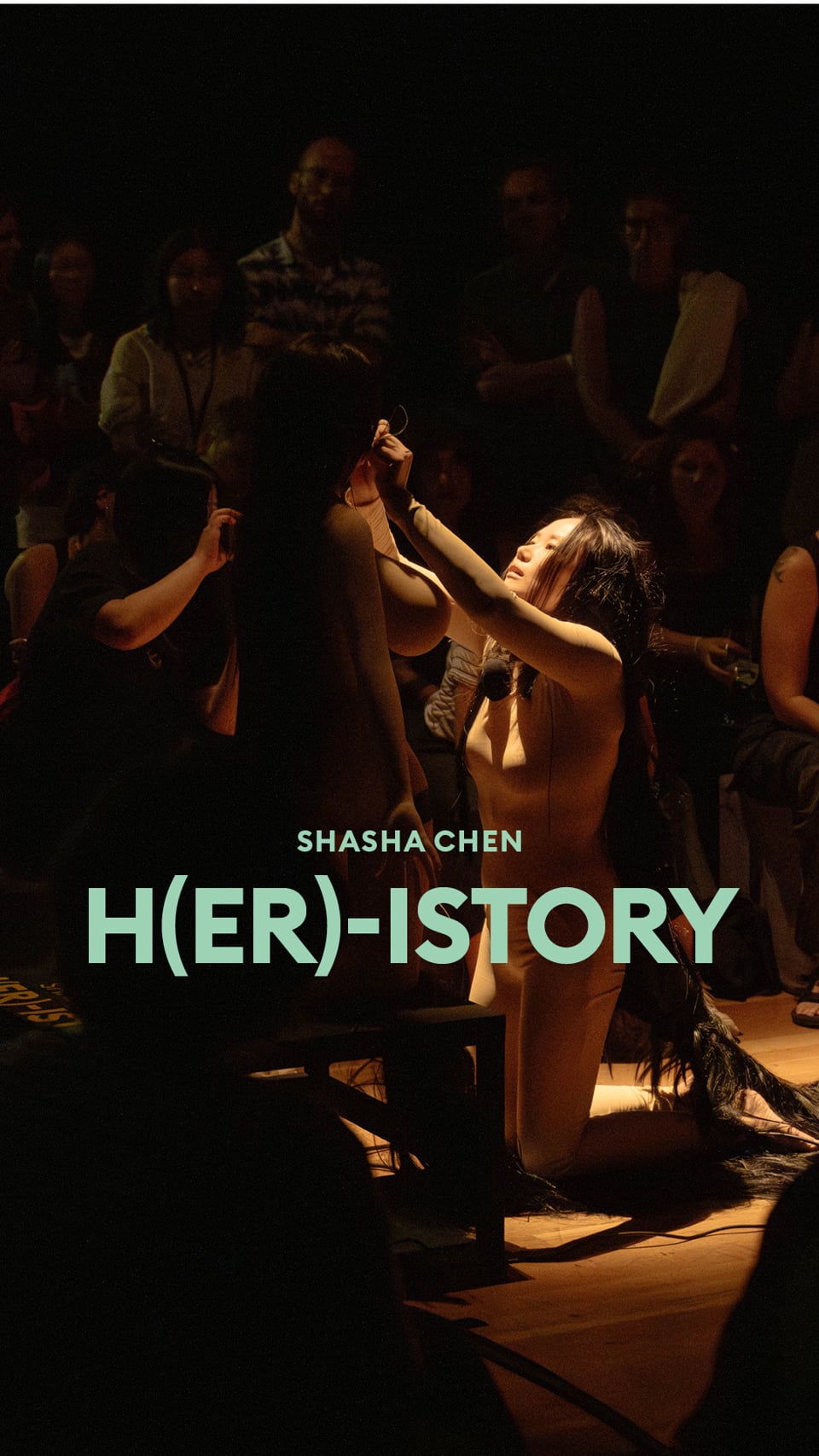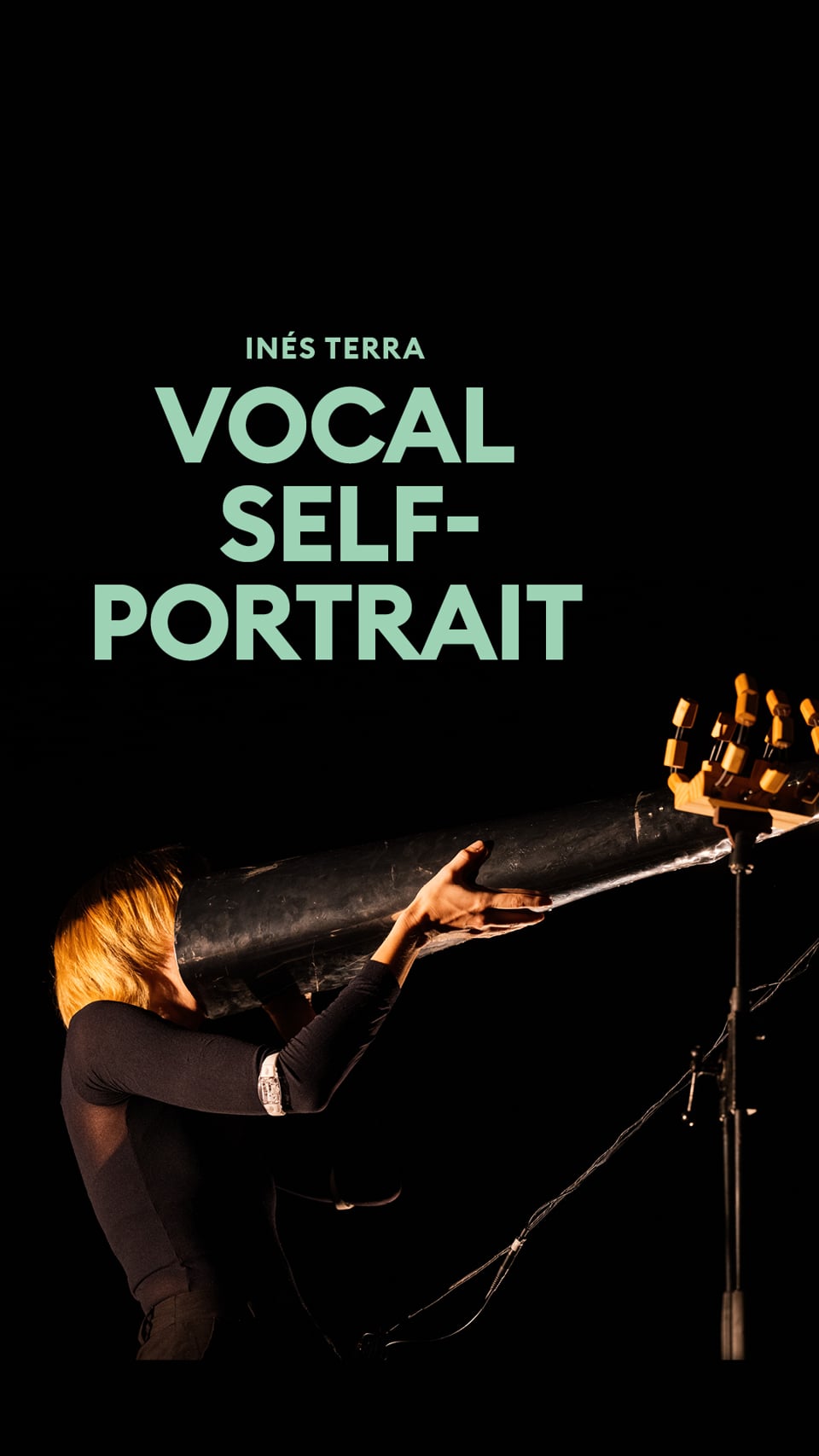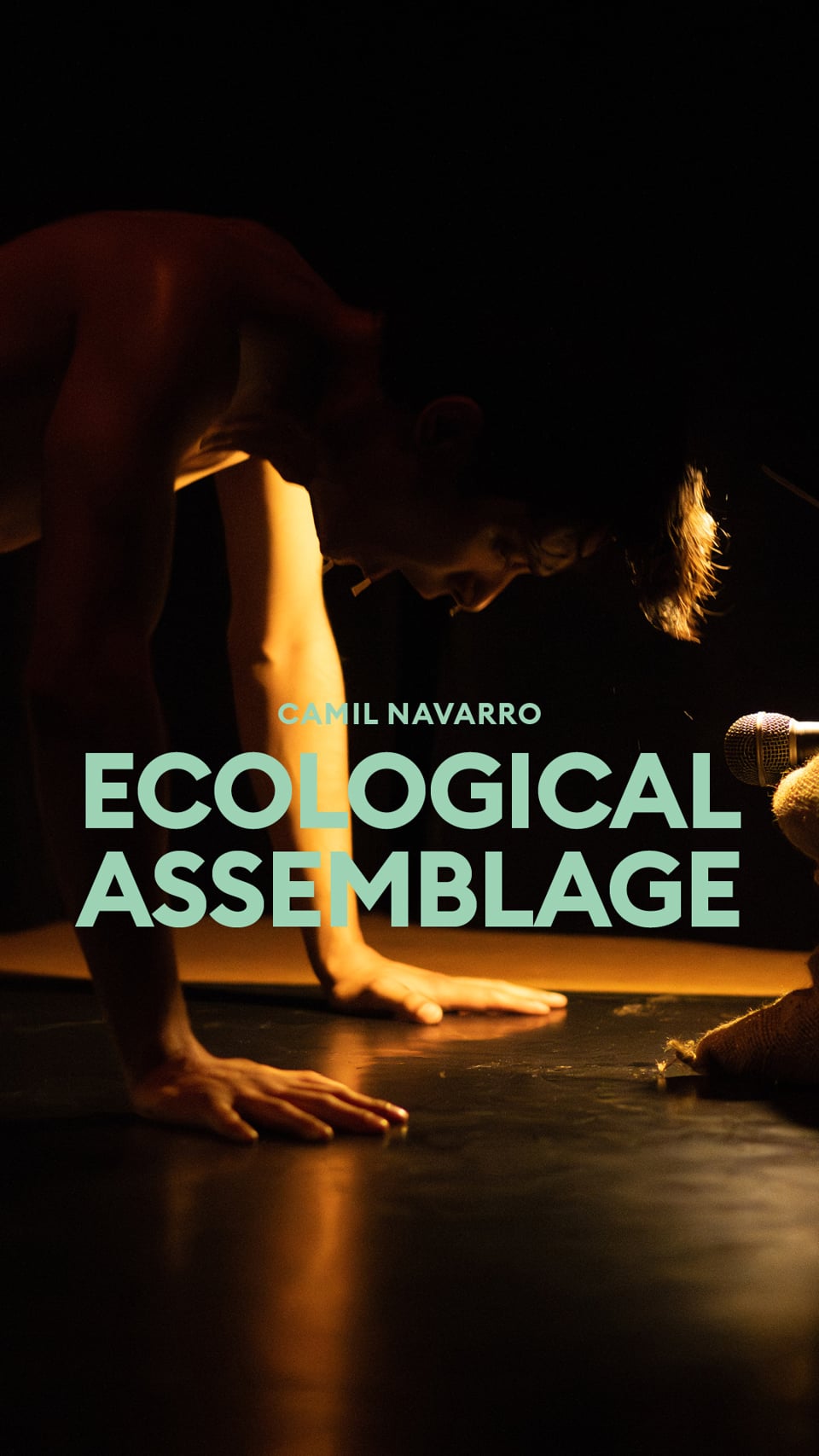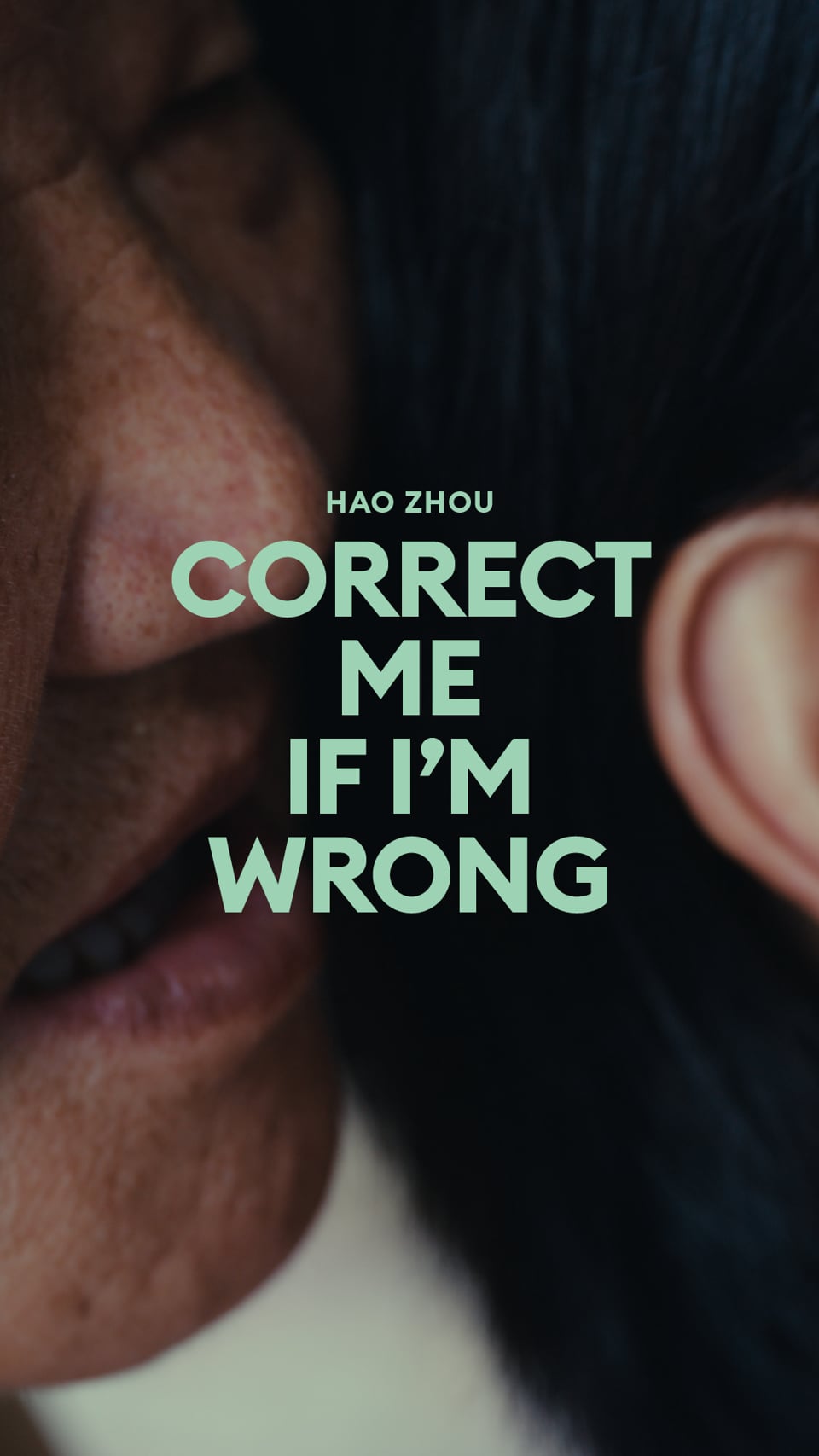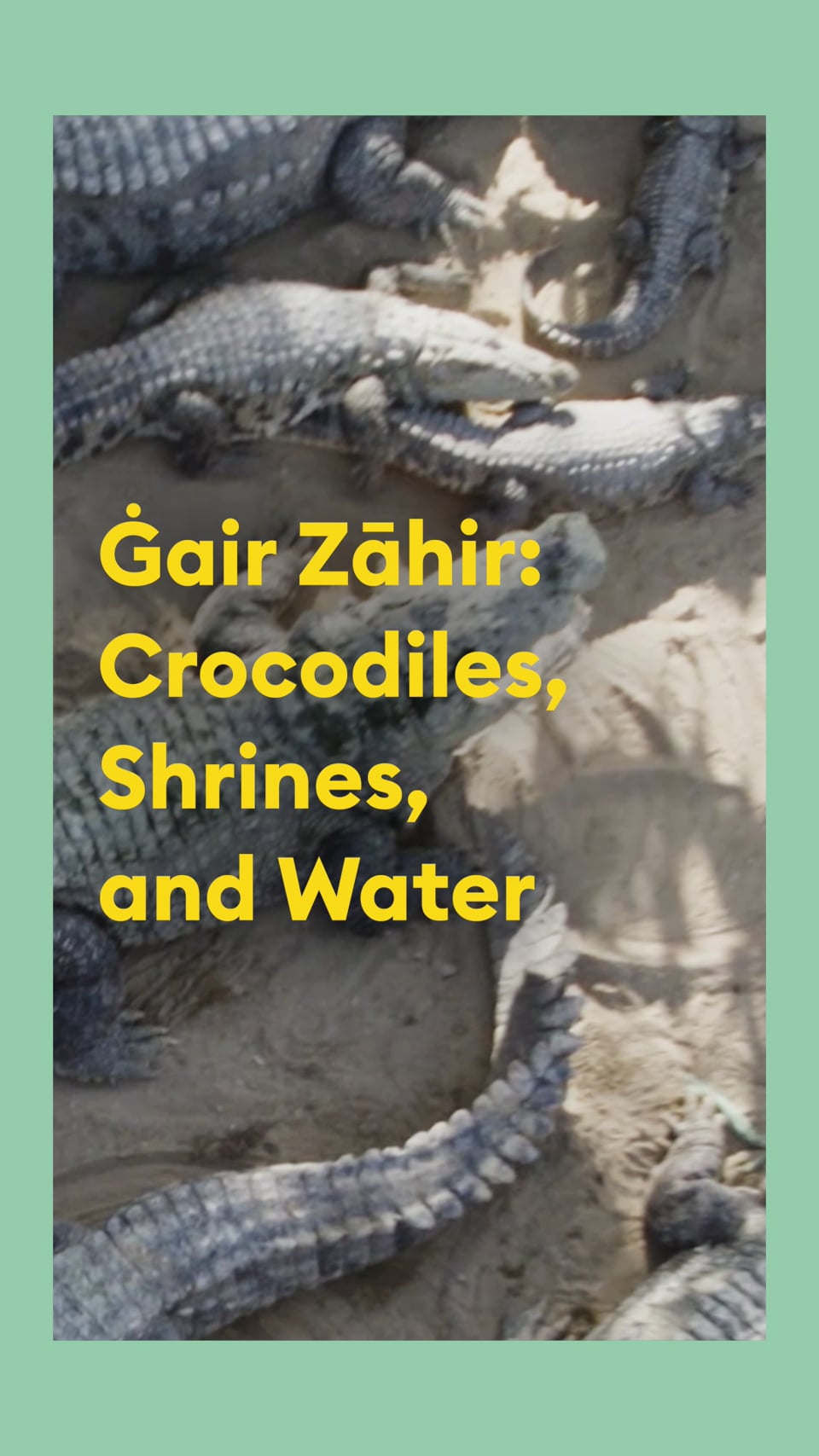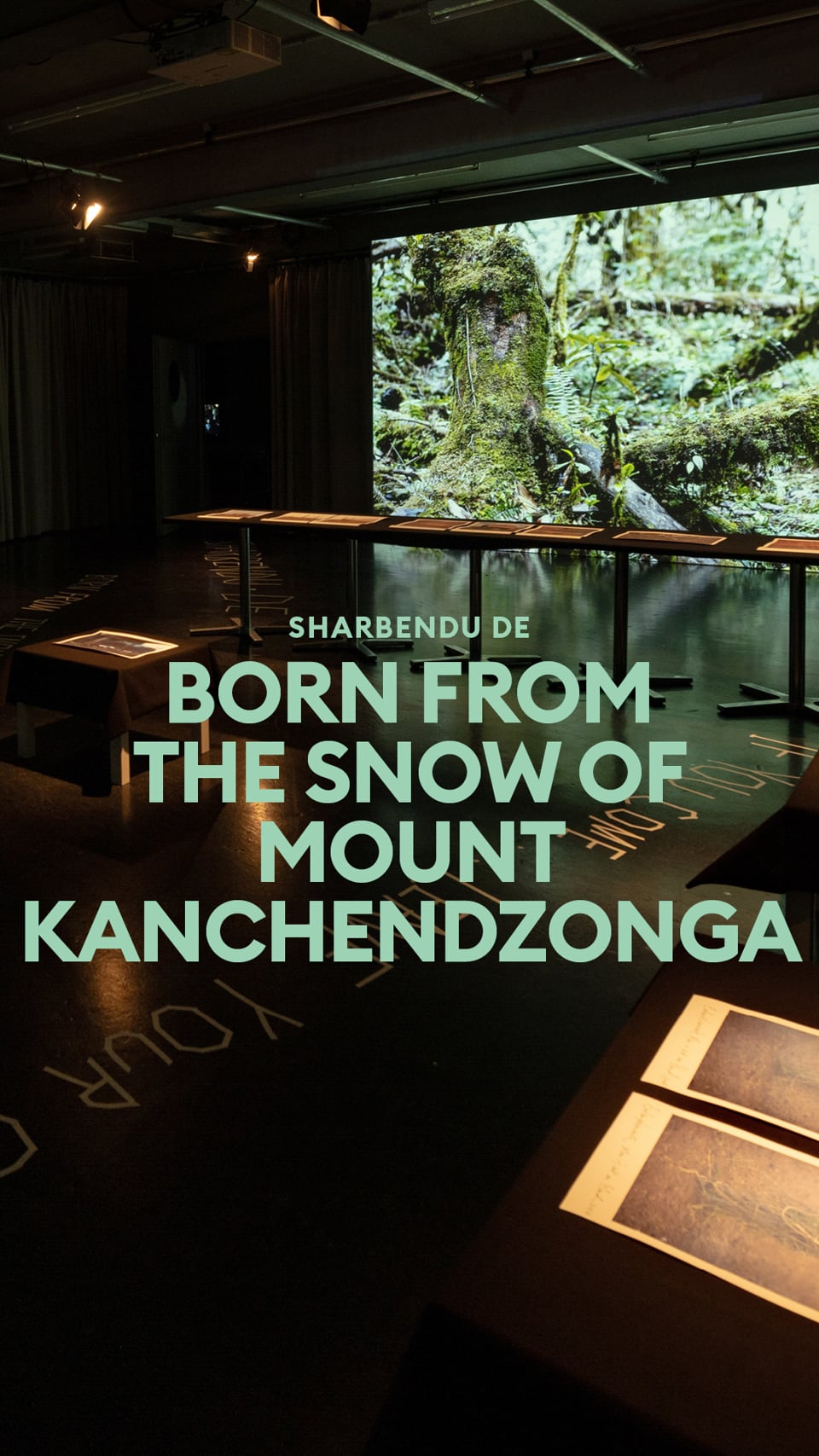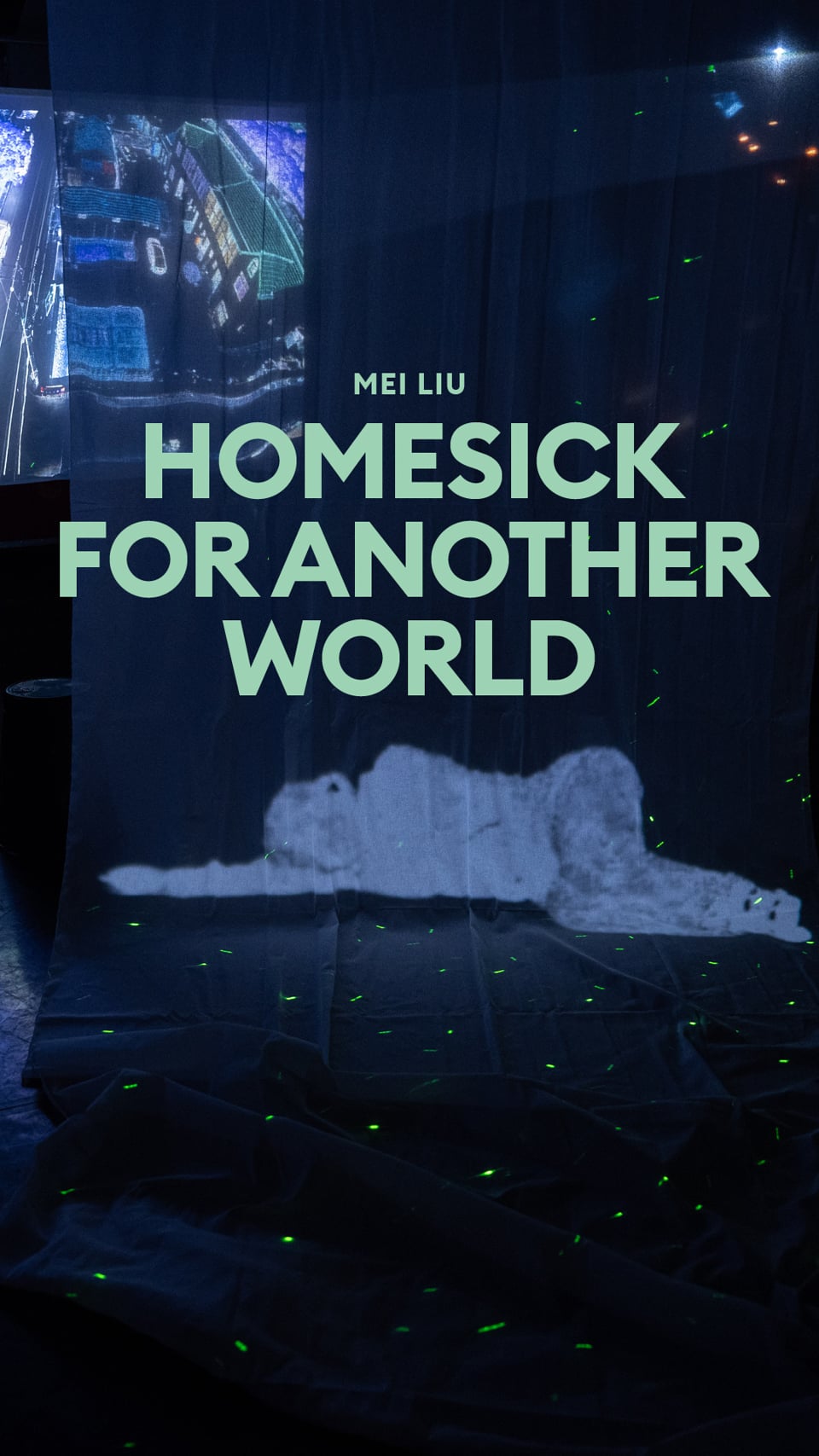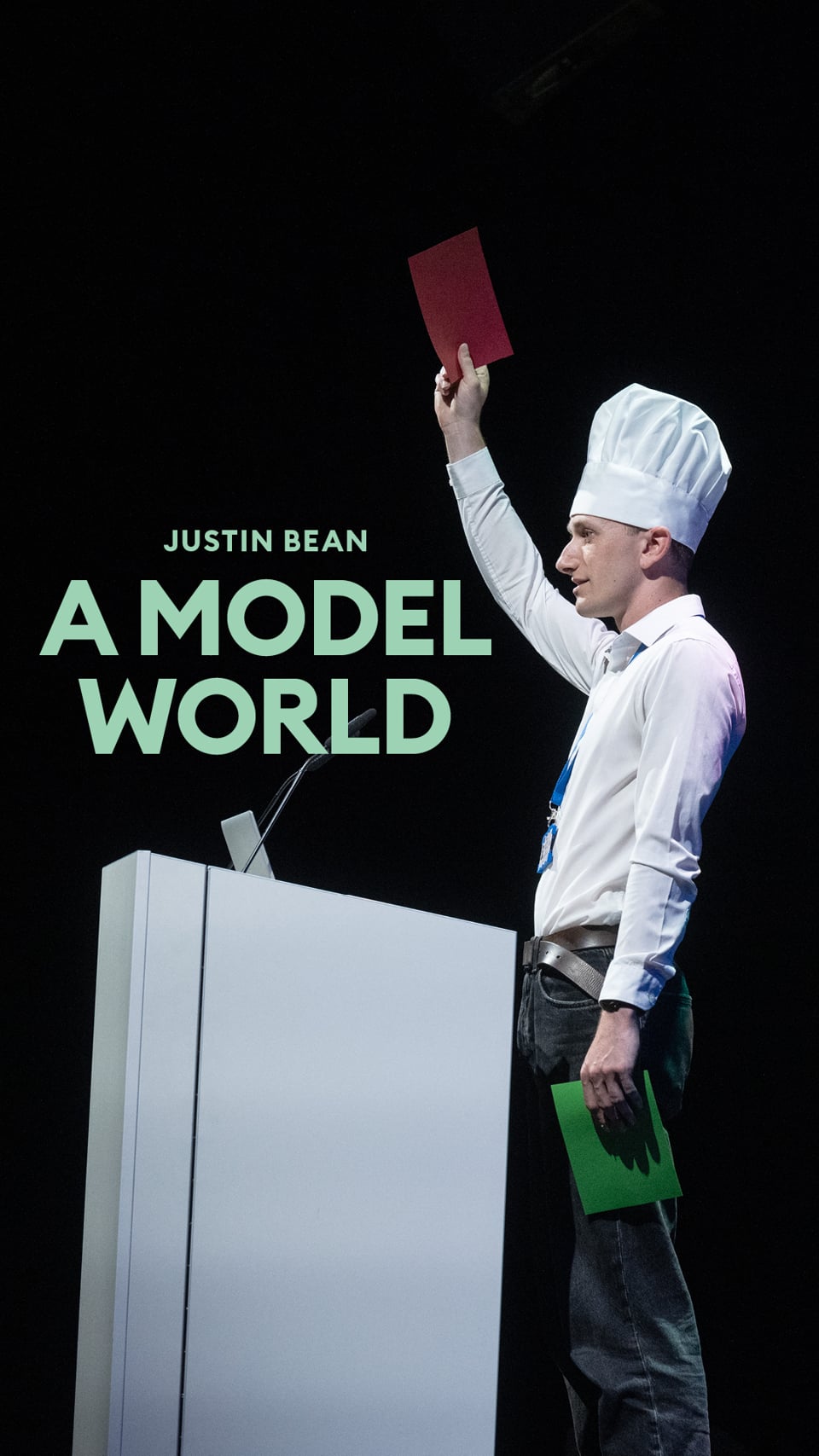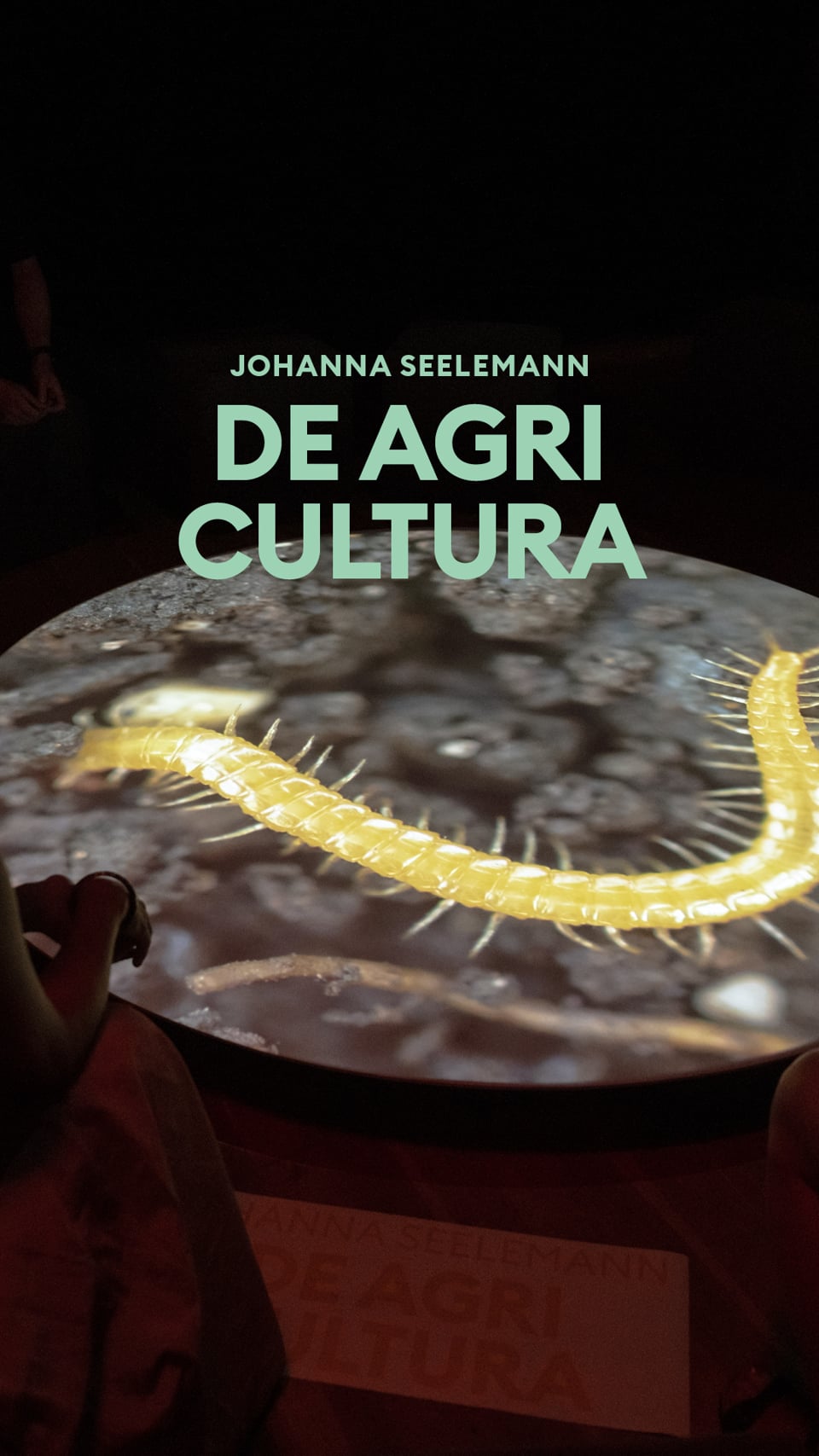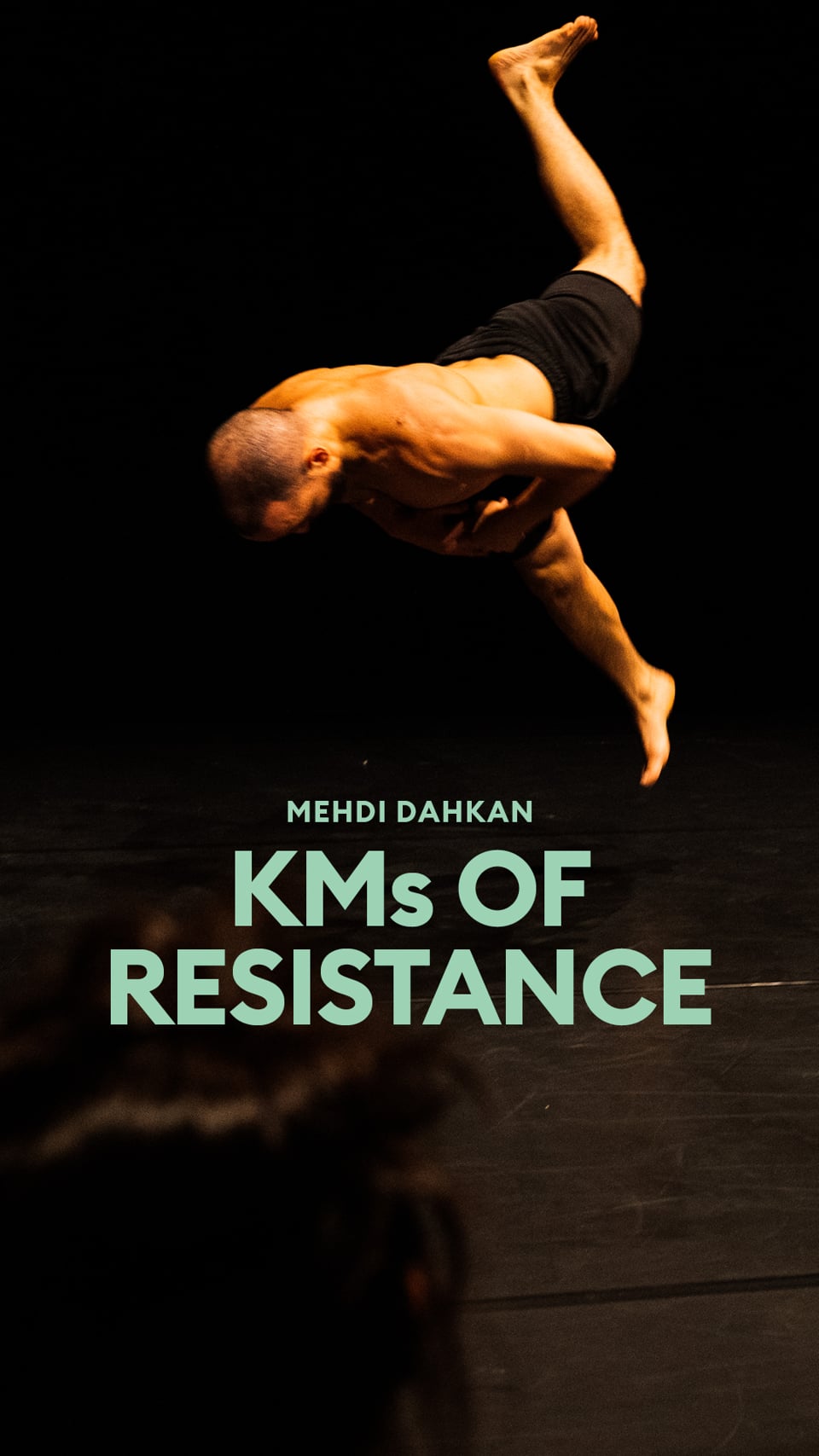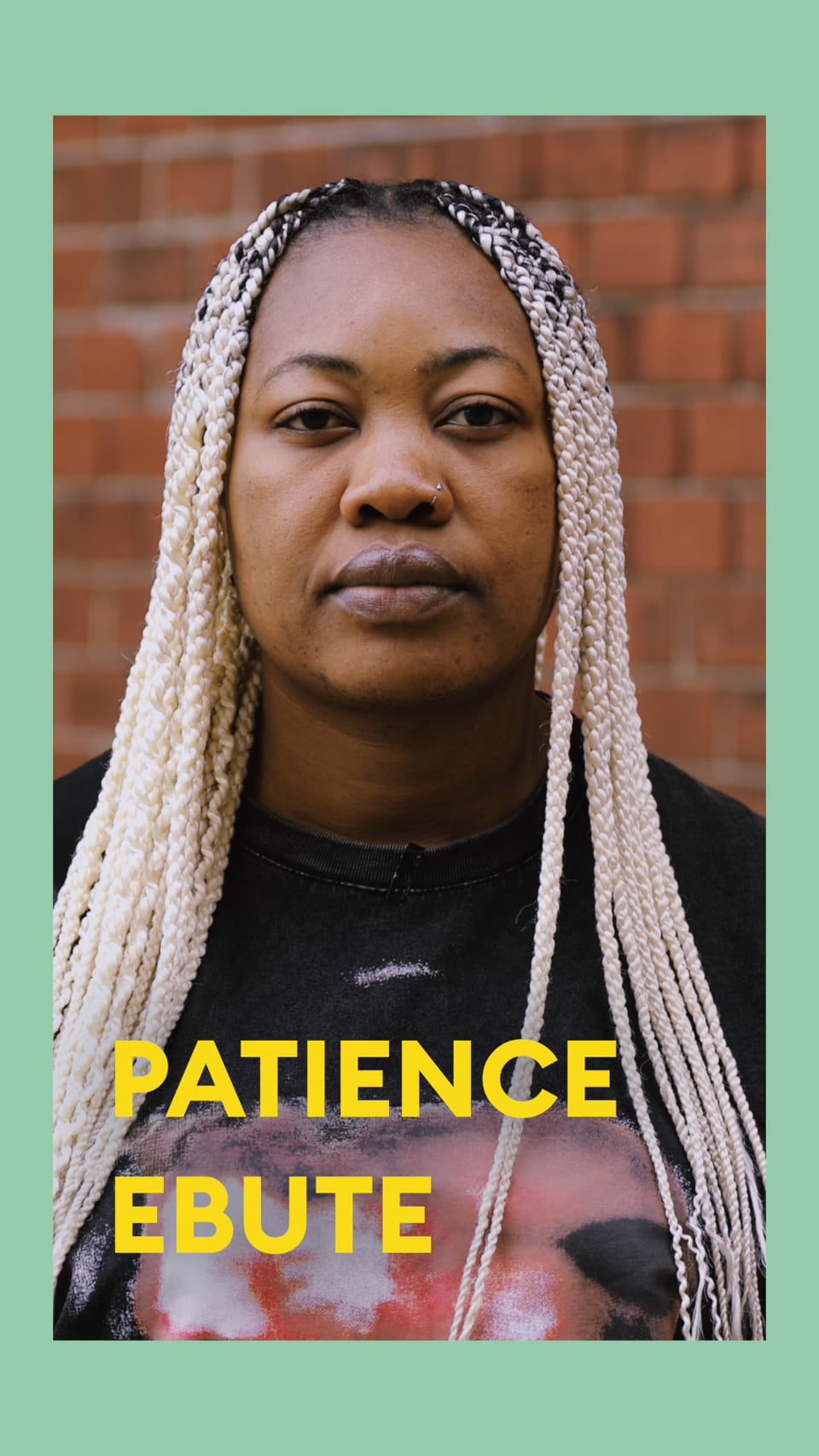Forecast 9: See the Projects Selected by the Mentors
The eighteen nominated proposals will be showcased at the Forecast Forum, August 2–4.
Browse past editions:
Shasha Chen
H(ER)-istory
Shasha Chen is a Chinese composer, performer, and multi-media artist based in Baltimore. For her proposal, Chen is creating a lifelike doll whose mouth is sewn shut. She situates this effigy within a performance-art event during which she will perform on a carpet woven out of what seems to be the doll’s hair. The work seeks to evoke a ritualistic ceremony. Through this performance, Chen initiates a conversation from within, aiming to unveil, discuss, and protest violence against women. She foregrounds silenced, oppressed, exploited, and objectified herstories. The piece employs sound, improvisation, object-making, and performance art, incorporated into conceptual, new-music theater.
Inés Terra
Vocal Self-Portrait
Inés Terra is an Argentinian-Brazilian singer, performer, and producer based in São Paulo. Her proposal involves a solo voice performance and an autofiction exercise based on the reconstruction of memories and vocal experimentation. Through vocal inventory and an object that filters the voice, the performance probes different ways of listening, while reflecting on expectations around sound coming from a body. Terra posits the work as a way of exploring one‘s own story; the work gives access to one‘s plurality of voices, and exploration of the Self as a fictional practice. It is fueled by a deep listening to everything that both surrounds and forms us.
Camil Navarro
Ecological Assemblage
Paris-based Chilean artist Camil Navarro’s practice has its roots in theater, dance, music, and performance. Navarro proposes a sonorous assemblage that weaves dissonant voices, somatic practices, and the sounds of water and nature to create a polyphonic set of autonomous melodies. Combined, they generate the titular Ecological Assemblage. The project stems from an analysis of and a reflection on water risk issues around the Aconcagua River Basin in Chile. What potentialities arise when we get in tune with an ecological being? What strategies can we explore to stimulate an understanding of symbiosis? And how can an absent ecological entity be present in one’s perception?
Anna Homan
Bike Polo Players
Documentary director Anna Homan proposes the project Bike Polo Players, which portrays her homeland, Ukraine, through the eyes of young Kiyvans. Before the 2022 Russian invasion, the most danger this group of friends had ever faced was getting injured playing bike polo. Homan’s documentary will show life amid the biggest war in Europe since World War II. People adapt, survive, and keep on hoping for a better future. Bike Polo Players will follow characters who had to make life-changing decisions. The movie is about exile, young people who joined the Armed Forces of Ukraine, about love, convictions, tragedy, and strength. It conveys simple stories against the backdrop of a very complicated reality.
Sharon Ryba-Kahn
Love till 120
Berlin-based Sharon Ryba-Kahn is working on a documentary centered on three elderly women: Mado (90), Dola (95), and Theas (99). The three could not be more different, but they share a common past: all survived the Holocaust. Ryba-Kahn’s profound wish is to show them as more than Holocaust survivors, to portray them and the impact of love on their lives. The film is a cinematic journey between each protagonist’s memories and current battles. Working with personal archives, pictures, footage, and testimonies, Ryba-Kahn asks how to represent their past? What do we need to see and feel to imagine them as young women living through the horrors of the Shoah?
Hao Zhou
Correct Me If I’m Wrong
Hao Zhou is a filmmaker from southwest China. They explore queer and feminist stories in rural spaces, using a mix of narrative, documentary, and experimental modes. Zhou’s documentary Correct Me If I’m Wrong will follow a family as its members confront their sole male heir’s deviation from expectations. To challenge their contempt, the heir indulges his family’s wish to rid him of everything they hate and fear. In their mountainous town, the family will expose the heir to a series of mystical interventions to transform his body, mind, spirit, and fate. As this arduous pursuit exposes tensions and traumas amid all participants, will the family end up being the ones who are transformed?
Léllé Demertzi
Lamentum Terrae
Léllé Demertzi is a Greek artist and cultural producer based in London. Her project Lamentum terrae is set against the backdrop of Europe’s largest documented wildfire, in Evros, in 2023. The three-channel video installation will spotlight the harrowing realities of climate crisis and its disproportionate impact on the most vulnerable regions of the global south. The project interweaves depictions of scorched land and apocalyptic landscapes with the performance of a centuries-old Thracian ritual of Dionysian worship that honors nature’s cyclical, annual revival. It is an urgent call for action in the face of ecological catastrophe. An image-based journey in search of a fresh blossom on a charred branch—a rite of spring that may never come.
Trà Nguyễn
Mother doesn’t know Mnemosyne
Trà Nguyễn is a Vietnamese theatermaker whose plays and set designs often resemble installations in which the performers move and act excruciatingly slowly. Nguyễn developed a method called Verbatim Bodies, which posits the emergence of differing characters from a performer’s holding of space, thus allowing for a multitude of narrative possibilities. Her short play Mother doesn’t know Mnemosyne evokes the Greek mythological figure Mnemosyne (Memory, the Mother of the nine muses) to narrate complex relations between different female figures. It also serves as an experiment: if Verbatim Bodies works, the audience should be able to access a multitude of narratives arising from a few performing bodies and actions.
Mudassir Sheikh
Ġair Zāhir: Crocodiles, Shrines, and Water
Berlin-based Pakistani artist Mudassir Sheikh presents a video installation exploring identity, Sufi mythology, resistance, and cultural interconnectedness. Inspired by the poetic connection between Goethe and the Sufi poet Hafiz, and the role of Sufi shrines as sites of communal healing in Pakistan, Ġair Zāhir transcends linear time to highlight the ethereal nature of trauma and the fluidity of identity. Through field recordings, sound collage, and oceanic sonic research with Lewa and Gwati music, the work blends sound and narrative to explore cultural intersections. Water serves as a metaphor for healing, fluidity, and interconnectedness, symbolizing the dualistic space between extremes—floods on one hand, droughts on the other.
Sharbendu De
Born from the Snow of Mount Kanchendzonga
Sharbendu De is a lens-based artist, academic, and writer based in Gangtok, India. His proposal takes a critical look at our alienation from nature and its calamitous outcome, which has potentially driven us closer to the Sixth Extinction. But narratives of climate doomsday alone are ineffectual; we also need positive stories. The Lepchas are an indigenous minority community living in Sikkim, a tiny Indian Himalayan state, who venerate nature and their landscapes. De intends to convey their story using photography and video, learning from their kinship-making philosophies, myths, and everyday life. He aims to spotlight our entangled multispecies relationships within the discourse of naturecultures.
Mei Liu
Homesick for Another World
Amsterdam-based Chinese filmmaker and artist Mei Liu researched the histories of people across China who experienced forced confinement. Now, she seeks paths toward transforming and transcending those experiences. To do so, Liu will embark on an image-making process based on her speculative screenplay, which follows a young Chinese filmmaker confined to a room for mysterious reasons. Between four cold walls, the protagonist turns inward, to lucid dreaming. In a meditative and hypnotic cinematic journey, the project will convey an audiovisual experience about confinement and emancipation by tapping into other dimensions. The work explores the underbelly of urban landscapes, lives on the margins, and mystical realms of existence.
Philadelphia Makwakwa
Displaced Home: Into You I See
South African researcher, documentary photographer, and music curator Philadelphia Makwakwa proposes a multimedia project that serves as an exploration of languages, peoples, culinary traditions, lifestyles, and the natural environment. Having questioned the diversity individuals are prevented from experiencing due to the existence of borders, Makwakwa seeks ways to represent an inclusive pan-African community. The artwork will thus showcase a sense of connectedness, diversity of thought, and love for our natural resources. Into You I See is a continuous exploration through imagery, story-telling, and a multimedia project by use of images, collaging, and sound.
Justin Bean
A Model World
London-based architect Justin Bean is a member of the Institute of Sustainability at the University of Bath, UK. In A Model World he proposes to break down the hyperobject that is carbon. Limitless and invisible, and reaching across vast temporalities, climate change is showing no sign of slowing down. Our complicity in the climate crisis is well documented. Bean’s proposal will spotlight our misgivings while asking how different imaginings of the future affect our viewpoint and dictate the degree to which we are willing to change. With this project, he asks what realities can we construct to shape cultural narratives and inform how we collectively envision change on a scale too vast to comprehend?
JOHANNA SEELEMANN
De agri cultura
Based in Germany and Iceland, Johanna Seelemann leads a design studio that explores the mystification of everyday objects and materials. De agri cultura explores a transformative approach to farming, in collaboration with agricultural experts and farmers, to incorporate speculative design and other-than-human perspectives. In dialogue with the Fraunhofer Institute‘s Futures and Innovation department, the project links agricultural futures with design research, investigating emerging trends such as drone-assisted irrigation and repurposing agricultural residues. By coalescing hightech solutions with traditional wisdom, Seelemann seeks to create engaging “diegetic prototypes” that bridge science and public engagement, exploring ecologically positive futures for agriculture.
Mali Weil
Interspecies Diplomacies
Mali Weil is an artistic platform that investigates the potential of performance as a space for the dissemination of political imagination. With Interspecies Diplomacies, she is building a world where relationships with other-than-human entities are negotiated through interspecies mediation. It’s a world in which all the cultural, social, political, and legal models are organized around a diverse set of knowledges, disciplines, customs, norms, and ways of living—acquired from early childhood—that aim at regulating human and other-than-human cohabitation. The goal of Mali Weil’s project is the radical imagination and design of new institutions for interspecies diplomatic relations—institutions with functions, operations, and legal frameworks.
MEHDI DAHKAN
KMs of Resistance
Moroccan choreographer, dancer, and performer Mehdi Dahkan uses the body to interrogate social constructs prevalent in the Maghreb today. In his proposal KMs of Resistance, Mehdi seeks to explore the act of celebrating as a form of protest and resistance. The work draws inspiration from the Chaabi dance gatherings which sparked resistance movements and were used to transmit coded information during Morocco's struggle for independence. Dahkan aims to create a performance that offers subtle yet festive access to the social struggles of our contemporary society. This project will be the final part of a trilogy based on ritual protest and desire.
Patience Ebute
Pages
Nigerian dancer and choreographer Patience Ebute proposes a performance that encourages the public to access a mythical realm. Pages is a solo dance that weaves together the threads of Nigerian tradition, Afro-urban culture, and the sacred stories of African women. Through movement and emotion, Ebute delves into the metaphysical, inviting audiences to journey with her as she negotiates with and confronts the echoes of tradition. Her body becomes a storyteller, recounting the initiation rites of Northern women and echoing the struggles and triumphs of women worldwide. A collaborative endeavor, Pages creates a tapestry of imagery, symbols, and movements between the past and a better future.
Koloto Siraji
Nabbuzana (The Melting Moon)
Ugandan artist, dancer, and researcher Koloto Siraji’s practice is grounded in the philosophical fabric of Bagisu traditions, which he melds with modern dance practices. Siraji proposes an exploration of the traditional African ritual hwambula, aimed at liberating spirits to afford them the freedom to exist in their own universe, free of human servitude. The study digs into concepts of spiritual imprisonment, examining the nonhuman existence and the traditional social dynamics within Ugandan communities. The performance employs the powerful metaphors of shape-shifting as well as vivid portrayals of struggles to investigate intricate concepts of spiritual confinement. It thereby expands conventional perspectives on colonialism beyond human-to-human interactions.

